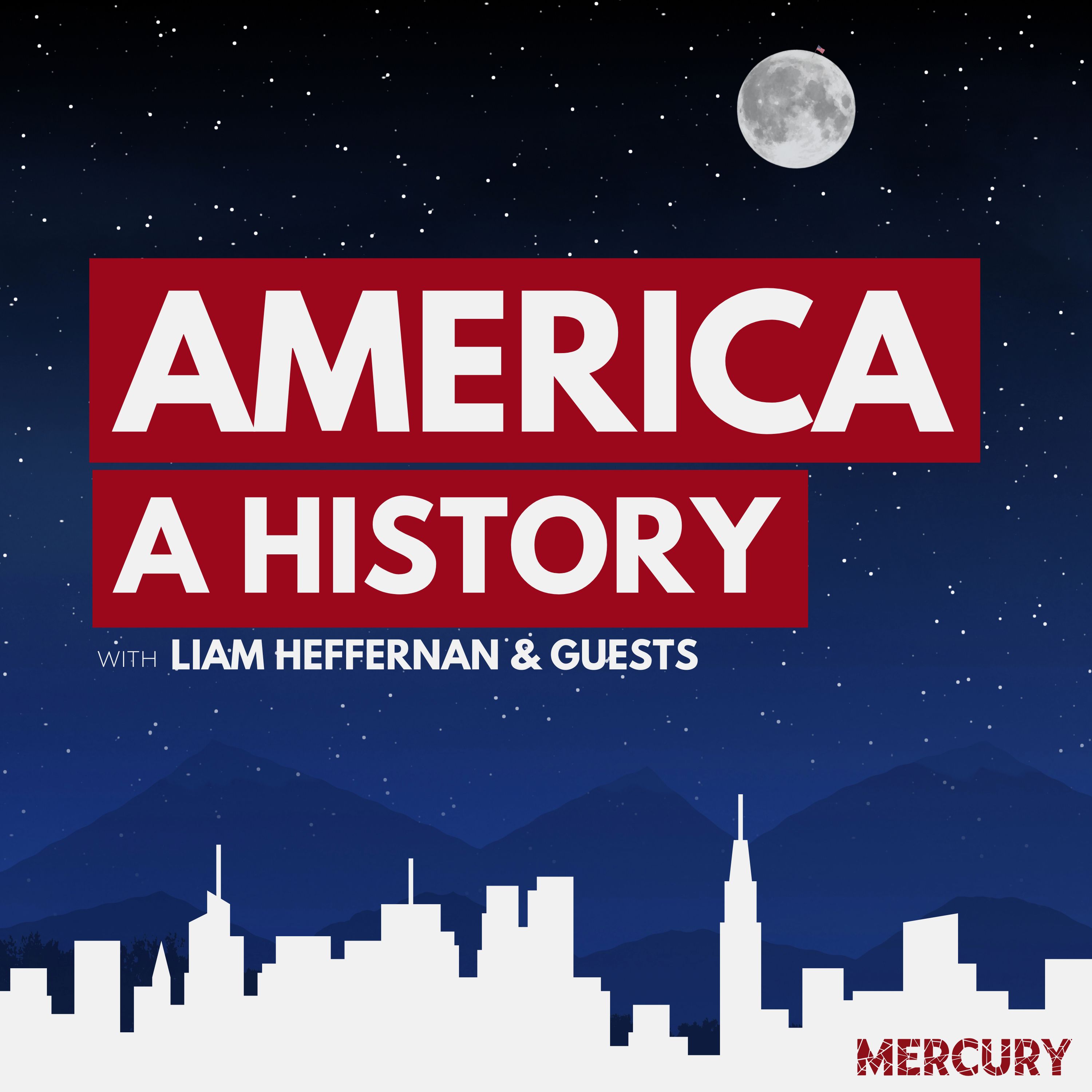bonus
BONUS: Why Did the Amish Leave Europe?
This week, we journey into a world of horse-drawn buggies, plain dress, and profound faith. But beyond the stereotypes lies a rich and evolving story of migration, community, and quiet resistance to modernity.
So in this episode I want to explore the history, culture, and customs of this often misunderstood community, as I ask… who are the Amish?
...
Special guest for this episode:
- Steven Nolt, a professor of history and Anabaptist studies and director of the Young Center for Anabaptist and Pietist Studies at Elizabethtown College. He’s also authored or coauthored no less than sixteen books on Amish, Mennonite, and Pennsylvania German history and contemporary life, including The Amish: A Concise Introduction.
...
Highlights from this episode:
- The Amish migration to America began with around 500 individuals in the 18th century, indicating their small initial population.
- By the early 20th century, the Amish population in Europe dwindled due to out-migration and changes in civic responsibilities.
- After World War I, many German Mennonites assimilated, leading to tensions with Dutch Mennonites after World War II.
- The last technically recognized Amish congregation in Europe merged into the Mennonite Conference around 1936, marking a significant cultural shift.
- The Beachy Amish movement has led to the establishment of new churches in Europe since the 1950s, reflecting a modern adaptation of traditions.
- Today, while traditional Amish lifestyles are largely absent in Europe, some Mennonite groups maintain a connection to Amish ancestry.
...
Additional Resources:
The Amish – A Concise Introduction by Steven Nolt
Young Center for Anabaptist and Pietist Studies | Elizabethtown College
Beachy Amish Mennonite Fellowship - GAMEO
What the Amish Teach Us: Plain Living in a Busy World by Donald Kraybill
Amish History: 10 Common Questions Answered - Amish America
Rumspringa: An Amish Tradition - Easy Sociology
...
And if you like this episode, you might also love:
What Makes Country Music so American?
Are the Oscars Still Relevant?
Why Does Everyone Love Disney?
...
SUPPORT THE SHOW
Individual Supporters: https://america-a-history.captivate.fm/support
University Partners: https://america-a-history.captivate.fm/partnerships
Brand Sponsors: liam@mercurypodcasts.com
Contact us: america@podcastsbyliam.com
We're partnering with NeoTaste, the exclusive membership card unlocking huge discounts at hundreds of restaurants across the UK & Europe. Get your first 2 months free by using the code AAH at checkout. Sign up here: https://neotaste.com/gb?code=AAH&a=2
Are you a University or college? Become an academic partner and your name will appear right here.
Mentioned in this episode:
This episode is sponsored by What's Your Map
What's Your Map is the British Podcast Award-winning show from map expert Professor Jerry Brotton. In each episode, he invites a special guest to share a map that means something to them. It's a fascinating show, and you can listen to the new season right now: https://podcasts.apple.com/gb/podcast/whats-your-map/id1766500219
Transcript
Hello, and welcome to this bonus episode of A History Recorded straight after our recently published episode, who Are the Amish? I'm joined now by the guest from that episode, Stephen Knolt, to discuss this a little bit more. Steve, welcome back.
Steven Nolt:Thanks. Happy to be with you again.
Liam Heffernan:Yeah, really great to have you on the podcast. I mean, it was just a fascinating conversation before, and anyone listening to this can see this right now on the feed.
So go and check out if you haven't listened to the main episode.
But I wanted to just touch on something we didn't really have time time to cover in the main discussion, and that is the Amish in Europe, because we all know they kind of left and went to America. But what then happens to those that were left behind?
Steven Nolt:Yeah. So the Amish population, first of all, roughly in numbers in the 18th century, we think about 500Amish folks crossed the Atlantic to Pennsylvania.
So not a large number, but again, it's not a large population to begin with.
Napoleonic wars, after about: Europe probably peaked about:So one of the major things that happens, apart from out migration, which seriously reduces the numbers that remain in Europe, is the impact on the continent of the civic rights duties, understanding of citizenship.
In the wake of Napoleon and of French civic law, which opened up citizenship to a variety of minority groups, group groups that had previously been legally discriminated against but also demanded civic responsibility with equal rights came equal responsibilities.
And so some of the particular, shall we say, exemptions that Amish folks and Mennonites in some cases and other minority groups may have tried to negotiate in the past with various tolerant places where they were living under the kind of exceptional tolerance stance of a particular lord or noble were taken away. And so that included things like military service, which was important for an otherwise pacifist group.
It also just became less socially acceptable to insist on endogamy or marriage within the group, although churches continued to try to emphasize that or underscore that. But we sort of read some of this negatively or read it backward through some of the church documents at the time.
There's in:But the whole tone of the document is so kind of defensive that one imagines that they're only doing this because these practices and beliefs are not being adhered to by, we might imagine, the younger generation.
By the late:But most of these congregations dwindle in the late 19th century, and by the early 20th century, they have either kind of merged with neighboring Mennonite groups, German Mennonite or Swiss Mennonite groups, or they. Yeah, they've just kind of redefined themselves in less traditionalist terms.
rland. And that existed until: cause they would have, by the:But when it came to practicing the Lord's Supper, the Communion Eucharist, they also practiced the ritual of foot washing in imitation of Jesus at the Last Supper, as recorded in the Gospel of John. And that was a rather distinctive Amish practice to incorporate foot washing as part of communion. Mennonites in Europe at the time didn't do that.
know, maybe set them apart in:And the pastors from those two churches, this last quote, unquote, Amish congregation and Mennonite congregation near Zweibruchen get together to talk about this wedding. And apparently out of that. Out of that. Out of that conversation, they just decide that these.
These two, which were relatively small churches, should merge and, you know, becomes part of the German Mennonite Conference. So that's the. That's the sort of. Not very dramatic end of sort of Amish Amish history in. In Europe.
Liam Heffernan: ou mentioned this was the mid-:Did they suffer any sort of persecution in Europe because of the war?
Steven Nolt:It's a good question. And someone Actually, other, sorry, German Mennonite historians would be. Could give you more detail on that than I could.
But one of the features, particularly after World War I, was that many of the German Mennonites and some of the Dutch Mennonites, less so. The Alsatian French Mennonites.
Well, and that, of course, they move under French control after World War I because of Alsace Lorraine moving from Germany to France, sorry, from France to Germany.
They had undergone a process, to oversimplify, have undergone a process of assimilation such that they seem to have often not been very, how should I say, not be strong critics of the regime that came into effect, the Nazi regime. Not that they were necessarily ardent Nazis, but they were not particularly critical of that movement.
Again, some of the churches in Alsace were more resistant, but again, they're relatively new in being under German control.
It's a fascinating story, and I'm probably not summarizing it very well, but there are, you know, later, after World War II, there are tensions between, say, German Mennonites and Dutch Mennonites because Dutch Mennonites felt like German Mennonites had acquiesced too quickly.
So we can see, you know, kind of after the war, that some of these tensions are still there, which point to some of the different directions that people would have taken.
Liam Heffernan:Are there still any sort of traces of the Amish lifestyle left in Europe like today?
Steven Nolt:So yes and no in terms of what your listeners would think of as traditional Amish lifestyle? No.
But certainly the Mennonite Conference, a conference of churches that exists today in Alsace in France, would many of those people, if they have long sort of historic family roots in that area, have some sort of Amish background? Because most of the, most of the today French Mennonites in Alsace would have some kind of Amish ancestry.
And they are aware of that and familiar with that. But it's not something that manifests itself in terms of what your listeners think of as an Amish lifestyle.
e other hand, since about the:This isn't maybe the way they would have phrased it, but sort of. They are interested in verbal evangelism, mission work.
They modified elements of their lifestyle includes perhaps most visually obviously driving cars rather than horse and buggy. They in many cases switch away from Pennsylvania Dutch to English, but they still dress very plainly.
Their mode of dress is not exactly like the Old Order Amish.
For example, just one sort of small example, men, so called Beachy Amish men, have beards, but they tend to be much shorter, much more tightly trimmed than Amish beards. Women's head coverings in the Beach Amish church are different than among the Old Order Amish, but the women still wear a head covering.
The name Bichi Amish comes from the fact that one of their early leaders was a man named Moses Beachey in Somerset County, Pennsylvania. Anyway, the Beach Amish have, through the years engaged in starting new churches in other parts of the world. And so I think there were.
hink it's already in the late:There's some bichi Amish in Berlin, in West Berlin, I believe. And now there's a Bichi Amish church in Ireland, and I should know the name of the town off the top of my head, and I don't.
But there's a Bichi Amish church in Ireland and there are a number of others in continental Europe. So these are not Old Order Amish. They're not driving horse and buggy, but they are dressing distinctively.
And many of them would identify themselves on some level as representing the Amish tradition. So that is the expression of the AM Church in some ways today in.
Liam Heffernan:Europe, which is interesting because, as you mentioned, it's named after Pennsylvanian. So it's sort of done full circle. Hasn't it gone to America and then kind of come back?
Steven Nolt:Right.
Liam Heffernan:But on that note, I think that's a nice place to wrap this up. And Steve, thank you again for joining me for this and for the full episode as well.
Steven Nolt:You're welcome. It was a pleasure.
Liam Heffernan:Yeah, it's a real pleasure on my part as well. And for anyone listening, do check out the full episode and remember to follow rate and review the podcast as well.
All the information for everything that we've mentioned across this and the main episode will be in the show notes. So please check that out if you want to learn more. And thank you all, as always, for listening and goodbye.


